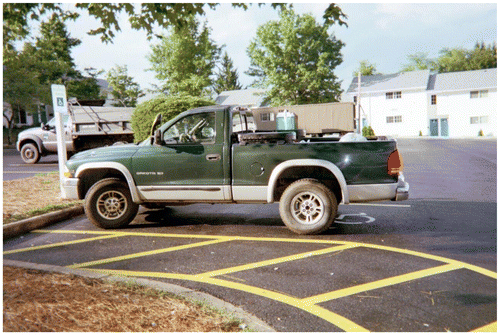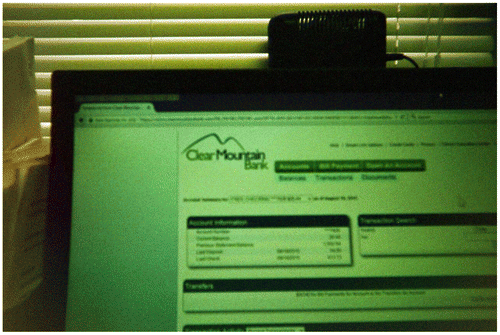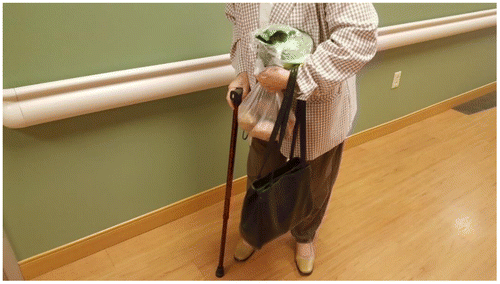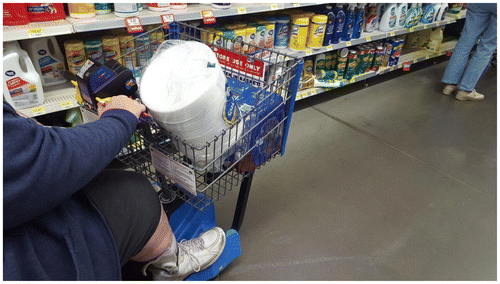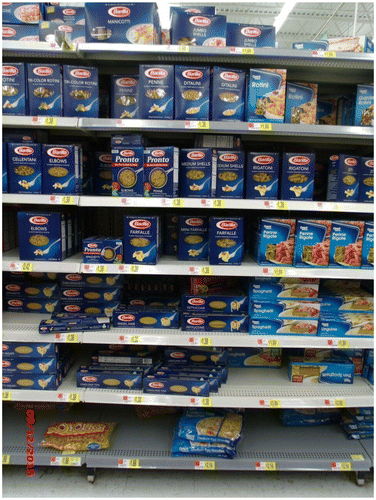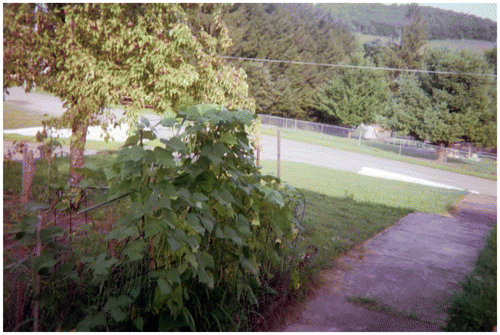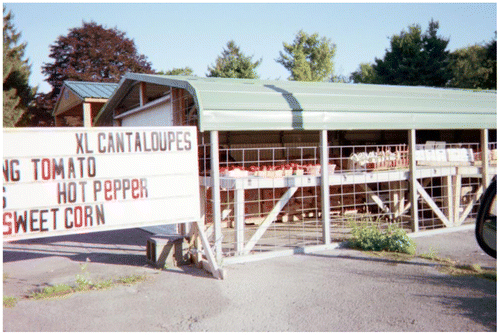Abstract
Introduction: This photovoice study examined the hypothesis that photos and narratives produced by older adults would facilitate the co-construction of a shared narrative about the food access issues in a rural county in West Virginia. For older adults, living in rural areas, several factors decrease access to healthy, nutritious food relative to the general population of older adults. Methods: Qualitative data from interviews, written narratives, dialogues, and photos from older adults living in a rural county of West Virginia. Was collected. Using directed content analysis, transcripts of written data were broken down into meaningful quote segments. All written data and photos were thematically coded using the five dimensions of food access. Results: Community-based participatory research (CBPR) as photovoice brought researchers and older adults together in a deliberative dialogue about rural food access and health. Analysis confirmed that shared photos and narratives among the elderly participants helped to facilitate agreement around problems with rural food access. Difficulties with the accessibility of food exceeded problems with the availability of food where geography includes psychosocial and physiological elements and the willingness of vendors to accommodate problems with restricted mobility and incomes. Conclusions: Public health practitioners and the elderly should benefit from community-based participatory research (CBPR) where photovoice enables an external research team to open up a conversation where community members may explore and co-create an understanding of person-place dynamics, environmental strengths, complex conditions, and policies that influence the lives of the community.
Public Interest Statement
Community-based participatory research (CBPR) has been used to engage older adults in deliberative dialogue about different topics that impact health and well-being. Photovoice is considered a form of CBPR because of the quality and type of engagement. The data collection method facilitates co-creation enabling a research team that is outside the community to open up a conversation where community members and researchers may explore person-place dynamics, document environmental strengths, assess complex conditions, and evaluate policies that influence the lives of the community. Photographic images aid in the recall of events, capture tangible and intangible physical and social conditions, and provide visual evidence of a shared space and an agenda about community conditions, needs, and potential solutions.
Competing Interests
The authors declare no competing interest.
1. Introduction
Maintaining a healthy diet is important for the elderly if they are to age well, avoid disease, and recover quickly after acute illness (Buys & Locher, Citation2015). A few of the demonstrated outcomes of under nutrition in older individuals include poorer functional status, greater health services utilization, and a higher likelihood of mortality (Buys et al., Citation2014).
The food environment has important features that impact the diet of elderly populations. One such characteristic of the food environment is access to food. Combatting under nutrition in elderly populations is difficult because gaining access to sufficient and healthy foods can be particularly challenging for older adults (Bales, Locher, & Saltzman, Citation2014).
For older adults living in rural areas, several factors decrease access to healthy, nutritious food relative to the general population of older adults including: lower incomes and poorer health than their urban and suburban counterparts; higher costs and the limited selection of food (Quandt, Arcury, McDonald, Bell, & Vitolins, Citation2001).
On the other hand, certain features of rural environments and characteristics of rural elders may protect against food insecurity such as the practice of gardening and other forms of home food production (Quandt et al., Citation2001).
West Virginia is projected to be one of the grayest States in both the nation and world by 2030 (West Virginia Bureau of Senior Services, Citation2012). This means the share of the state’s population that is over age 65 is expected to grow to 22.9% by 2030, up from 16.0% in 2010. In comparison, by 2030 the population age 65 and older is expected to make up 20.3% of the United States population (Deskins & Lego, Citation2014).
Community-based participatory research (CBPR) has been used to engage older adults in deliberative dialogue about different topics that impact health and well-being (Blair & Minkler, Citation2009; Lewinson, Citation2014; Lewinson, Robinson-Dooley, & Grant, Citation2012; Mahmood et al., Citation2012). CBPR recognizes that parties external to a community work best in partnership with community members who are themselves experts on their community (Hergenrather, Rhodes, Cowan, Bardhoshi, & Pula, Citation2009). CBPR is supposed to integrate community members throughout the research process to produce data and interventions that are authentic to community experience and incorporate knowledge and action based upon the lived experiences of community members (Hergenrather et al., Citation2009; Jagosh et al., Citation2012).
Photovoice is considered a form of CBPR because of the quality and type of engagement (Hergenrather et al., Citation2009). This data collection method facilitates co-creation enabling a research team that is outside the community to open up a conversation where community members and researchers may explore person-place dynamics, document environmental strengths, assess complex conditions, and evaluate policies that influence the lives of the community (Wang & Burris, Citation1997).
Using photovoice, researchers and decision makers can learn about person–place dynamics, document place based strengths and evaluate programs, policies, and regulations that influence the lives of diverse community members (Molloy, Citation2007; Novek, Morris-Oswald, & Menec, Citation2012).
Photographic images aid in the recall of events, capture tangible and intangible physical and social conditions, and provide visual evidence of community relationships and positions in a shared space (Novek et al., Citation2012). Finally, the dialogic nature of photovoice facilitates dialogue, deliberation and the opportunity to co-construct ideas, narratives, and an agenda about community conditions, needs, and potential solutions (Molloy, Citation2007; Novek et al., Citation2012; Wang & Burris, Citation1997).
The purpose of this qualitative study was to examine how the older adults worked together to construct a shared narrative about their food environment specifically access to food in a rural county in West Virginia. The hypothesis was that photos and written narratives from the elderly participants would facilitate the co-construction of a shared narrative around key problems with food access for older residents. Results from the qualitative study enabled us to observe how the use of photos and narratives moved the older adults to engage with one another to form a narrative about rural food access. Further, we were able to identify critical food access issues using the five dimensions of food access including availability, accessibility, affordability, accommodation and acceptability of food (Caspi, Sorensen, Subramanian, & Kawachi, Citation2012). In the end, the study highlighted critical food access issues that excluded availability instead focusing on the dimensions of accessibility, accommodation, and affordability.
2. Methods
2.1. Study design
An Institutional Review Board approved the original study and subsequent analysis of data collected between July and October 2015 from 24 older adults living in a rural region of West Virginia. The Preston County Senior Citizens, Inc. organization and the Preston County Family Resource Network (FRN) assisted in recruiting elderly participants for a community meeting via a flyer posted at eight Senior Clubs and seven Senior Centers in Preston County and advertised in the Preston County News and Journal Penny Saver. The flyer stated that the purpose of the meeting was to discuss the issues of food access and transportation for a future photo exhibition featuring pictures taken by and about seniors in Preston County.
To participate a person had to call an unstaffed phone line and leave their contact information, reside in Preston County, be at least 60 years of age, and fit the profile below or if not know someone that fit the profile: Difficulty with getting groceries; no reliable transportation; inability to meet their needs with existing income; missing meals during the week; and running out of groceries before the end of their financial month. Participants were allowed to self-identify.
The initial encounter with the older adults was a general community meeting. This was followed by two focus group discussions and finally recorded key informant interviews with elderly residents. A recognizable leader of a social service organization was invited to co-moderate the meeting and focus groups with the lead researcher.
A semi-structured interview guide consisting of open-ended general questions about participants’ food environment and nutrition was used to structure conversations with the seniors. The initial guide was developed with help from the executive directors of two local non-profit agencies that provided services to seniors and families.
The development of the interview guide was based on an iterative process where after reviewing data collected from each encounter, the lead researcher made modifications to the guide in an effort to gain clarity, depth, and confirmation on issues and topics that arose (Werner, Schoepfle, & Ahern, Citation1987). Elders were asked about what they usually ate, their food environment, how food preparation and grocery shopping were done, their budget and income, influences on their food situation, experiences of getting food, sources of food; food preferences; use of food assistance programs, and perceptions of healthful food.
Disposable cameras were given to the seniors. Participants engaged in a discussion on the ethical use of cameras, food access issues in their community, and potential photos that might represent the issues. A photovoice training guide that covered the goals of the project was designed and distributed. The guide covered: how to take photos, the ethics of taking photos, permission forms if a recognizable photo of a person was taken; and a journal to keep track of the photos and record reflections on why a photo was important. During the photovoice training, the participants were encouraged to talk about food access and shopping issues in relation to the kind of photos they might take.
After three weeks, the seniors reconvened to present their photos and share the stories they had written about the photos and food access issues.
To conclude data gathering in the photovoice study, the executive directors from social service agencies and elderly participants who chose to reveal their identity agreed to one-to-one interviews. The researchers edited the 15–20 min interview segments into a 29 min video titled, “The Elderly and Food Access in Preston County, West Virginia” at https://tinyurl.com/zg5z8mw.
2.2. Classification and qualitative analysis
Results from interviews, focus groups and community meetings with the elderly participants were transcribed verbatim. Coding of photos and the quote segments from the written stories, community meeting, and videotaped interviews proceeded according to the principles of directed content analysis which is appropriate if a concept or theory could benefit from further description leading to validation or an extension of that theoretical framework (Andress & Fitch, Citation2016; Caspi, et al., Citation2012; Hsieh & Shannon, Citation2005; Krippendorff, Citation2012). Transcripts were then broken down as quote segments that were as small as possible while still remaining meaningful (Miles & Huberman, Citation1994; Tesch, Citation1990).
The data were coded using the five dimensions of food access (Table ). (1) availability defined as the adequacy of the supply of healthy food (e.g. presence of certain types of restaurants near people’s homes, or the number of places to buy produce; (2) accessibility signifying the geographic location of the food supply and ease of getting to that location; (3) affordability representing food prices and people’s perceptions of worth relative to food cost; (4) acceptability which is defined as an individual’s attitude regarding the attributes of their local food environment and whether or not the given supply of products meets their personal standards; and (5) accommodation representing how well local food sources accept and adapt to local residents’ needs (i.e. store hours, parking, or types of payment accepted) (Andress & Fitch, Citation2016; Caspi et al., Citation2012).
Table 1. Dimensions of food access
2.3. Validating the primary data
To ensure trustworthiness of the coding and data analysis using the five dimensions of food access, the results were presented in a community exhibition and debriefing session at a local art center in October 2015 (Krefting, Citation1991). Participants viewed the 29-min video, “The Elderly and Food Access in Preston County, West Virginia” and were invited to grade each of the five kinds of food access in comparison to the grades assigned by the researcher. Last, community members present viewed an exhibition featuring simulated grocery store aisles displaying photos and stories on food access provided by the participants.
3. Results
3.1. Participant demographics
The participants (n = 24) were white women apart from two white males that later dropped out of the project. Self-reported data indicated a mean age of 72 years ranging from 59 to 85. Most of the participants had at least one chronic health problem such as diabetes, heart disease or arthritis. Except for three participants, everyone reported a physical impairment that limited mobility.
3.2. Availability: the adequacy of the supply of healthy food (e.g. presence of certain types of restaurants near people’s homes, or the number of places to buy produce
As a new comer to the state, the primary investigator talked about learning to drive on West Virginia roads. On the other hand, none of the elderly participants complained about having to drive the narrow, hilly, roads to get food. There was a distinct absence of narratives from the older adults about traveling a long distance for food. It seemed that the seniors were not bothered by the distances because many of them had grown up in the rural area and were accustomed to the roads and distances they had to travel for food. While some cities within Preston County did not have grocery stores, from the senior’s perspective, food was available within the County in the form of big box retail grocery stores, smaller grocery stores, food pantries, and farmer’s markets. However, while these retail food sources existed, in most cases the outlets were often unaffordable or failed to meet the senior’s preferences and needs for freshness, quantity, or health.
Older adults without physical limitations had photos and stories about the significance of growing food as a family tradition for sustenance and to share (Figure ). The significance of gardening is evident in the following statement:
To have control over my food and what goes into it. And it’s part of my heritage. My grandfather lived with my family for as long as I can remember until he died. He was Italian; born and raised in Italy. And he was a gardener. And he had a huge, huge garden. The family would take everything that we needed. My mom canned food and there was just food left all over. People would drive by and ask when’s the garden going to be ready? Because after the family took their food, then, you know, he gave it to whoever wanted it.
3.3. Accessibility: the geographic location of the food supply and ease of getting to that location; and Affordability: food prices and people’s perceptions of worth relative to food cost
The elderly participants agreed that long drives to food sources were commonplace. Nevertheless, in the case of older adults, the dimension of accessibility had to be expanded beyond geographic attributes to include issues with physical mobility, affordability, and even relationships. To express the idea that food was available but not adequate or affordable seniors used photos of their bank statement (Figure ).
The impacts from food costs were experienced on a gradient from the lowest income to those with higher levels of income support. Narratives and photos from several elderly participants demonstrate agreement on the issues with affordability for those elderly participants with a low versus moderate fixed income. Every elderly participant reported issues with the affordability of food. Those with lower incomes sometimes had to choose between necessities such as medicine, car repairs, utilities, or food. Those with higher levels of social security benefits did not have to choose between everyday needs and food but rather made choices between higher priced foods versus a lower cost or substandard version.
One low income senior provided a photo of her vehicle to demonstrate her dependence on the truck and that if a repair were ever to be needed she would have to choose between essentials like food, medicine, or the vehicle repair (Figure ).
… my truck is broke down a lot, and when I have to buy the parts to fix it up, then that is less money for food. I work part time. Without my truck I can’t get to work, the store or get medicine. That not only goes for me but for other people who are in the same boat.
While another participant with higher benefits used a photo of her bank statement to make clear the issues with money and the tradeoffs in food quality made to manage a fixed income (Figure ).
I designate a certain amount of money every two weeks and that’s what buys the groceries. Anything above and beyond that we do without … the good brand of bacon; maybe the peaches or the apples or whatever the current vegetable or fruit is for that month. It isn’t always pricewise a good buy. Because it’s in our diet and we sometimes have to do away with some other things—because we need the fruit.
One older adult described food availability and problems with quality and affordability in this manner:
Well, where I live—the produce isn’t up to—I wouldn’t buy it. It’s just simple as that. I wouldn’t buy it. I go to Oakland to get my produce. As I said, I raise a garden. I had a small one this year. But I had green beans and tomatoes and I had a pear tree that had six bushels of pears, so I can give to everybody. Because as I said, I can’t afford to go to the little store in—my community and buy because he charges almost double what everybody else does.
Other photos taken to depict budget issues with food access included photos of sugar fee jam, priced much higher in comparison to regular jam (Figures and ). In this case a diabetic senior who needed the sugar free jam observed how much more she had to pay for something beneficial to her health.
I went shopping alone. I spent $189.00. I usually have to get the same things every month, and am always surprised at each time I go a month, and the prices get higher. I would love to be able to buy other foods, but know I can’t because of my budget and having to get things that last a whole month. I would love to be able to buy fresh produce for a month, but just can’t afford it. It is frustrating and when I get home and put my groceries away, I am so exhausted from the frustration, that I usually take a nap. I usually shop right up the street from my house at Save-a-lot because it’s convenient. So many people have the same problem with not enough money to get healthy foods, especially if you are diabetic like I am.
Other areas of agreement on the accessibility of food were described by the older adults in terms of physical mobility and the acquisition of available food due to difficulty standing and walking. One senior took a photo of herself trying to balance her walking cane, a purse, and grocery store items (Figure ).
To capture the difficulty with physical problems and the effort to move and maneuver food one senior said:
And I think it’s that we all need help getting from the cart into the trunk [of the car] or wherever. And then when I get home I take it in slowly. I take what goes to the freezer if I have frozen things and sometimes the other I leave until I can get strength enough to get it in the house. I don’t walk without my cane unless I have something else that I’m holding onto. Like the cart in the store. That’s fine. I put my cane in the cart, but I don’t walk well on uneven ground at all. I use my cane a lot and more—as I age, I’m using it more and more. It’s just gotten to that point that I use my cane when I have to.
3.4. Accommodation: how well local food sources accept and adapt to local residents’ needs (i.e. store hours or types of payment accepted); Acceptability: Does the food available meet the standards of the elderly?
The elderly participants voiced a series of strong stories plus photos demonstrating the need for vendors to be more accommodating due to limited riding shopping carts, assistance with carrying groceries (i.e. to the car and into their homes), handicapped parking spaces, and accessible store shelving (i.e. not too high or low). Their photos depict two elderly participants walking out into a big parking lot depicting the absence of nearby parking, a riding grocery cart, and shelves with food stored up high and very low (Figures ).
The shelves in the grocery store are so high you can’t reach’ em of course. You are going to have to have someone with you that can reach them. And also, from that cart or in a wheelchair you’re not going to be able to reach the lower items or the shelves that are half empty and all the items are pushed, you know, close to the back. A lot of times at Walmart there isn’t any wheelchairs available, so you have that problem getting it into the bags, getting it from the Walmart into the car and then when you get home, from the car to the house.
Well, if I can get a cart I can hold onto it and get through Walmart. But, it’s very hard to get it … … … … I don’t get anything that’s heavy because I can’t. But, the girl—I ask them not to pack it too heavy that I can’t carry it and they put it in the buggy for me. And when I get to the car sometimes I wait until somebody comes along and offers to help me or I tell the clerk that I need help.
Acceptability was expressed by the seniors in terms of products being too large for a household of one or two people or having to buy expensive fruit that was not fresh. Many of the participants preferred to grow their fruit and vegetables. Photos of a garden and the farmers market were used to express their preferences and frustration with the food they had to accept (Figures and ).
… the produce isn’t up to - I wouldn’t buy it. It’s just simple as that. I wouldn’t buy it. I go to Oakland to get my produce … and when I go I try to get enough to last me for a month and that means freezing milk and things like that because it won’t keep otherwise. And I have to be careful what I eat because I have a heart problem, but it’s so far so good.
This is our local fruit market and they have lots of fresh vegetables and it’s a little process too but at least you know you’re getting fresh vegetables and fruits there. The vegetables just taste better. I think they’re better quality. When you go to the grocery store the cucumbers have wax on them.
I had a big garden that I planted but water went thought it and destroyed it so I ended up with this. Next year I intend to make the squares and plant in the squares and do my whole front yard for vegetables and that way I can share with others too cause that is what it’s all about.
I had went on a visit to see my kids and came back and there’d been a flood on the street up above me and it came down and destroyed [my garden]. I didn’t have all the things that I—like cucumbers and squash and things like that. We have a [farmer’s market]—they come down in the park on Friday night with fresh produce and everything, so we could go down there. But, it was a lot higher this year than what it was before.
4. Discussion
This article has described the process by which older adults in a rural county in West Virginia presented, evaluated, and co-created a photo narrative depicting the features of a shared food environment. A major strength of a photovoice approach is the ability of the technique to amplify voices, expose similar and divergent positions, and encourage reflection. This participatory method helps groups to create an agenda including evidence to raise awareness about issues. Further, it provides a series of activities that allows the group to prepare and rehears a presentation that articulates their interests and issues (Molloy, Citation2007).
Another benefit of the photo voice technique is that researchers and participants can explore photo narratives for deeper emotions and personal histories that may not be immediately apparent in a picture, but may be embedded in participants’ photo descriptions (Blair & Minkler, Citation2009; Lewinson, Citation2014; Lewinson et al., Citation2012; Mahmood et al., Citation2012). While none of the pictures represented great photographic skill, the pictures of the bank statement, higher priced sugar free jam on store shelves, garden, and food products stacked high and low in a store represent the elderly participant’s shared narrative of concerns with food access (Bales et al., Citation2014; Quandt et al., Citation2001).
Another important aspect of the photovoice technique is that qualitative researchers learn to reflect on their own views, values, and position in relation to the participants (Tufford & Newman, Citation2012). Since researcher and community participants are considered co-researchers in CBPR in order to enhance the relevance of the findings and avoid the imposition of the researcher’s views it is important for the researcher to be as transparent as possible about their views. In this case, the principal investigator talked quite freely about being new to the state and unfamiliar with the rural country side and driving practices. This in turn opened up an understanding between the researcher and participants about how distances and the roads may or may not be barriers to food access.
Secondarily, this study provides a broader conceptualization of the rural food experience for older adults than that captured by the five dimensions of food access (Andress & Fitch, Citation2016; Caspi et al., Citation2012). We found that for these elderly adults availability was not an issue due to gardening, the presence of farmer’s markets and large and small retail outlets. On the other hand, accessibility was a tremendous problem not in terms of distance but rather as an issue of physical mobility. Expansion of the dimension of food access for accessibility would help to make the issue of accessibility more relevant for rural elderly populations (Wolfe, Olson, Kendall, & Frongillo, Citation1996).
Accordingly, additional factors that measure accessibility might ask the following: Am I able to get to the food? Will the weather be an obstruction? Do I have physical limitations? Am I physically capable of transporting the products, arranging storage, and meal preparation? Do I have the social relationships to help me obtain food in the event of illness, weather, or no transportation?
Some limitations to the study should be noted. All of the participants were white females. It is possible that the addition of males and other racial and ethnic groups might have altered the findings.
5. Conclusion
Photographic images aid in the recall of events, capture tangible and intangible physical and social conditions, and provide visual evidence of a shared space and an agenda about community conditions, needs, and potential solutions. Results of this study affirmed the hypothesis that photos and written narratives from the elderly participants aided in the co-construction of a shared narrative around key problems with food access. Photovoice is a relational visual and narrative method that may be used to encourage self-reflection, the expression of ideas and opinions, dialogic engagement, and the creation of a shared agenda based on accumulated evidence. Such a tool can empower older adults to participate in policy and programming decisions that will benefit their communities.
Up until now there is no evidence that these issues in relation to food access have made it onto the public agenda for the elderly in West Virginia. As next steps, it would be helpful to explore the barriers in this rural setting that could be altered to increase food access for older adults that experience physical impairments, limited financial support, stores that do not accommodate their problems, and those that wish to grow their own food.
Funding
This work was supported by the Carolyn Haase Trust.
Acknowledgements
We wish to acknowledge the administrative contributions of Victor Slate, Lora Humphrey, Janie Lou White, Barb Thorn, and Kathryn Kirk. This research was funded by the Carolyn Hasse Trust. The sponsor had no role in the study design, collection, analysis and interpretation of the data, writing the report nor the decision to submit the article for publication.
Additional information
Notes on contributors
Lauri Andress
Dr Lauri Andress has dedicated her career as a social sciences researcher and policy analyst to public service where her expertise lies in linking scholarly work with social issues, the public policy process, and community organizing. Connected to her broader interests in social justice and uneven power relations, Dr Andress’ research interests have focused on policies affecting the social determinants of health, especially social and community development policies that result in health inequalities.
Sunah S. Hallie
Sunah Hallie is a recent MPH graduate from West Virginia University School of Public Health. Her area of concentration is Health Policy, Management and Leadership. She now works as a Knowledge Manager with CSI Consulting coordinating development of the CMS Transforming Clinical Practice Initiative. Sunah has extensive experience in health department administration and data analysis on subject matter areas of clinical practice, food insecurity and community health needs assessments.
References
- Andress, L., & Fitch, C. (2016). Juggling the five dimensions of food access: Perceptions of rural low income residents. Appetite, 105, 151–155.10.1016/j.appet.2016.05.013
- Bales, C. W., Locher, J. L., & Saltzman, E. (2014). Handbook of clinical nutrition and aging. New York, NY: Springer.
- Blair, T., & Minkler, M. (2009). Participatory action research with older adults: Key principles in practice. The Gerontologist, 49, 651–662.10.1093/geront/gnp049
- Buys, D. R., & Locher, J. L. (2015). What does the evidence reveal regarding home- and community-based nutrition services for older adults? Journal of Nutrition in Gerontology and Geriatrics, 34, 81–84.10.1080/21551197.2015.1038457
- Buys, D. R., Roth, D. L., Ritchie, C. S., Sawyer, P., Allman, R. M., Funkhouser, E. M., … Locher, J. L. (2014). Nutritional risk and body mass index predict hospitalization, nursing home admissions, and mortality in community-dwelling older adults: Results from the UAB study of aging WITH 8.5 years of follow-up. The Journals of Gerontology Series A: Biological Sciences and Medical Sciences, 69, 1146–1153.10.1093/gerona/glu024
- Caspi, C. E., Sorensen, G., Subramanian, S. V., & Kawachi, I. (2012). The local food environment and diet: A systematic review. Health Place, 18, 1172–1187.10.1016/j.healthplace.2012.05.006
- Deskins, J., & Lego, B. (2014). Population trends in West Virginia through 2030. Retrieved from http://www.be.wvu.edu/bber/pdfs/BBER-2014-04.pdf
- Hergenrather, K. C., Rhodes, S. D., Cowan, C. A., Bardhoshi, G., & Pula, S. (2009). Photovoice as community-based participatory research: A qualitative review. American Journal of Health Behavior, 33, 686–698.
- Hsieh, H.-F., & Shannon, S. E. (2005). Three approaches to qualitative content analysis. Qualitative Health Research, 15, 1277–1288.10.1177/1049732305276687
- Jagosh, J., Macaulay, A. C., Pluye, P., Salsberg, J., Bush, P. L., Henderson, J., … Herbert, C. P. (2012). Uncovering the benefits of participatory research: Implications of a realist review for health research and practice. Milbank Quarterly, 90, 311–346.10.1111/milq.2012.90.issue-2
- Krefting, L. (1991). Rigor in qualitative research: The assessment of trustworthiness. American Journal of Occupational Therapy, 45, 214–222.10.5014/ajot.45.3.214
- Krippendorff, K. (2012). Content analysis: An introduction to its methodology. Thousand Oaks, CA: Sage.
- Lewinson, T. (2014). Co-constructing home with photovoice: Older residents of an assisted living facility build a Photonarrative. Qualitative Social Work, 14, 702–720 doi:10.1177/1473325014561139
- Lewinson, T., Robinson-Dooley, V., & Grant, K. W. (2012). Exploring “home” at an assisted living facility: Looking through residents’ lenses with Photovoice.
- Mahmood, A., Chaudhury, H., Michael, Y. L., Campo, M., Hay, K., & Sarte, A. (2012). A photovoice documentation of the role of neighborhood physical and social environments in older adults’ physical activity in two metropolitan areas in North America. Social Science & Medicine, 74, 1180–1192.10.1016/j.socscimed.2011.12.039
- Miles, M. B., & Huberman, A. M. (1994). Qualitative data analysis: An expanded sourcebook. Thousand Oaks, CA: Sage.
- Molloy, J. K. (2007). Photovoice as a tool for social justice workers. Journal of Progressive Human Services, 18, 39–55.10.1300/J059v18n02_04
- Novek, S., Morris-Oswald, T., & Menec, V. (2012). Using photovoice with older adults: Some methodological strengths and issues. Ageing and Society, 32, 451–470.10.1017/S0144686X11000377
- Quandt, S. A., Arcury, T. A., McDonald, J., Bell, R. A., & Vitolins, M. Z. (2001). Meaning and management of food security among rural elders. Journal of Applied Gerontology, 20, 356–376.10.1177/073346480102000307
- Tesch, R. (1990). Qualitative analysis: Analysis types and software tools, New York, NY: Falmer Press.
- Tufford, L., & Newman, P. (2012). Bracketing in qualitative research. Qualitative Social Work, 11, 80–96.10.1177/1473325010368316
- Wang, C., & Burris, M. A. (1997). Photovoice: Concept, methodology, and use for participatory needs assessment. Health Education & Behavior, 24, 369–387.10.1177/109019819702400309
- Werner, O., Schoepfle, G. M., & Ahern, J. (1987). Systematic fieldwork. Newbury Park, CA: Sage.
- West Virginia Bureau of Senior Services. (2012). West Virginia Bureau of senior services state plan on aging October 1, 2012–September 30, 2014: Assuring well and vital seniors. Retrieved from http://www.wvseniorservices.gov/LinkClick.aspx?fileticket=s7RY5aT%2fZso%3d&tabid=93
- Wolfe, W. S., Olson, C. M., Kendall, A., & Frongillo, E. A. (1996). Understanding food insecurity in the elderly: A conceptual framework. Journal of Nutrition Education, 28, 92–100.10.1016/S0022-3182(96)70034-1

